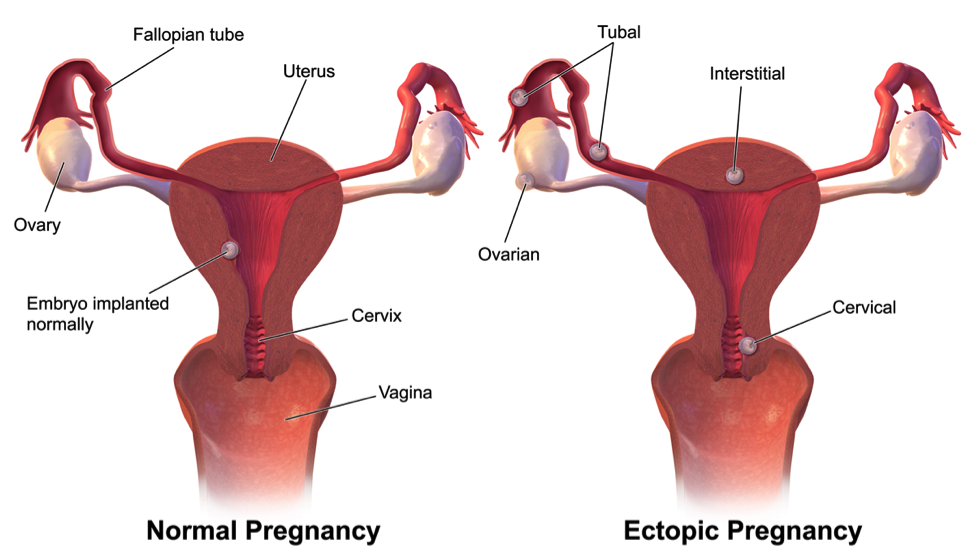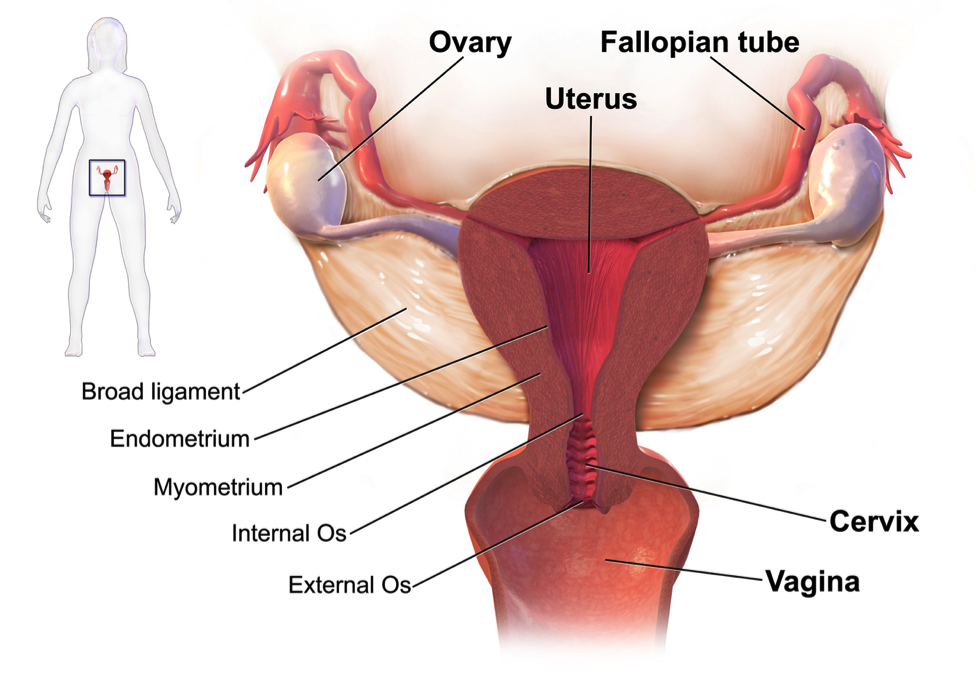An ectopic pregnancy occurs when the fertilized egg does not attach itself to the inner lining of the uterus where it normally would, and instead attaches to a different location. The embryo often attaches itself along the reproductive tract in the fallopian tubes, thus resulting in a tubal pregnancy. Fallopian tubes are far too narrow to carry a growing embryo, which can cause complications during pregnancy and during birth if the fertilized egg continues to develop.1 Often, the developing embryo will die while in the fallopian tubes before any surgical or medical action needs to be taken. Ectopic pregnancies can also occur in the ovaries, cervix, or abdomen and can cause other pregnancy complications as well.2 Ectopic pregnancies occur in approximately two percent of all pregnancies.1 Ectopic pregnancies can be detected in the early stages of pregnancy via an ultrasound and blood hormone tests.2

Table of Contents
Causes
In general, an ectopic pregnancy is caused by the inflammation and scarring of the fallopian tubes as a result of a medical condition or surgery. Ectopic pregnancies can occur as a symptom of a sexually transmitted infection (STI). They are also common among females who have already experienced an ectopic pregnancy before, as the normal anatomy of the fallopian tubes may be altered.2 Hormonal imbalances, genetic abnormalities, and birth defects can also cause abnormalities to the condition of the fallopian tubes and other reproductive organs.3

Symptoms
Common symptoms of an ectopic pregnancy include abdominal pain and vaginal bleeding, as well as all of the normal signs of pregnancy. However, only 50% of females experience both of these symptoms as a result of an ectopic pregnancy. Vaginal bleeding during the first trimester of a pregnancy can indicate an ectopic pregnancy, urinary tract infection, or miscarriage. Should a female experience any vaginal bleeding during pregnancy, she should always consult with her physician. Symptoms of an ectopic pregnancy generally begin from six to eight weeks after the last menstrual period if located in the fallopian tube, but may begin later if located in another location. General signs of pregnancy, including nausea, dizziness upon standing, and fatigue are also symptoms of an ectopic pregnancy and may signal internal bleeding, which requires immediate medical attention. Females may also experience breast discomfort, which is a general sign of pregnancy. However, many females do not realize that they are experiencing symptoms of an ectopic pregnancy until signs of shock (low blood pressure, weak or rapid pulse, pale skin, or confusion) begin to set in, during which the female should be taken to the emergency room.2
Health Risks
One major risk of an ectopic pregnancy is internal bleeding due to the rupturing of the fallopian tube. Bleeding can also occur from the growing placenta as it can puncture the veins and arteries. While less than one percent of females in the United States die from ectopic pregnancies, it still remains as the leading cause of death in the first trimester (first nine weeks) of pregnancy. Any female who is menstruating and is at risk for pregnancy is susceptible to experience an ectopic pregnancy, although the highest likelihood is among females between the ages of 35 and 44. Females who have developed pelvic inflammatory disease (PID) have an increased risk of an ectopic pregnancy because it can damage the fallopian tubes and disrupt the egg transport pathway to the uterus. Females with multiple sexual partners or a history of family infertility are also at greater risk for an ectopic pregnancy.2

Treatment
Since an ectopic pregnancy can pose a medical threat to the female, surgical or medical removal of the fertilized egg is suggested as a proper treatment. Medical removal includes an anti-cancer drug that kills the growing cells in the placenta, inducing a miscarriage.2 The doctor needs to monitor the female’s blood for human chorionic gonadotropin (hCG) after the drug injection. High hCG levels signal to the doctor that the female is pregnant. When treated surgically, a small incision is made in the abdomen and the doctor uses a small lens camera to view the area. Then, a small tube is inserted to remove all of the ectopic tissue with suction. Further surgical options may be necessary if major damage to the fallopian tubes is incurred. The fallopian tube may either be repaired or removed, depending on the severity of the damage.4 Because of advancements in surgical technology, the mortality rate has dropped from 50% to 5% over the last century in the world. While the technology to treat ectopic pregnancies is improving, the rate of incidence is also increasing due to the length of time females take before seeking medical attention.2
Some developing embryos are spontaneously absorbed by the female’s body before any immediate threat is posed to the female’s life, although this outcome cannot be predicted. Few females have given birth to full term with an ectopic pregnancy.2

Recovering From Surgery
After surgery, it is most important to take proper hygienic care of the incisions. The main concerns are to keep the incisions clean and dry while they heal. It is important to check for signs of infection including abnormal bleeding, redness, and swelling. While it is normal to experience some small blood clots after surgery, any excessive bleeding should be addressed to a physician. In order to insure a speedy recovery, one should not lift any heavy objects, drink lots of fluids, and rest.3

Coping With the Loss of a Child
Losing a pregnancy is a stressful and emotional event, no matter how far along. It is important to recognize the event and understand that it is healthy and normal to grieve the loss of a child. One should rely on close friends and family, and maybe consider reaching out to a support group or therapist. Upon trying to have another child, one should consult with their doctor in order to have the proper tools to detect any abnormal hormonal changes or signs of another developing ectopic pregnancy.4

Concluding Remarks
Ectopic pregnancies occur when the fertilized egg experiences a complication in its pathway to the uterus. Because they can be life threatening, ectopic pregnancies need to be treated with a medical or surgical option to remove the embryo and prevent any internal bleeding. Luckily, the majority of females who have an ectopic pregnancy go on to have healthy pregnancies in the future.3
References
- American Pregnancy Association, “Ectopic Pregnancy: Symptoms, Causes, Risks and Treatment.” July 20, 2017.
- Charles Davis MD, William Shiel MD, and Melissa Stoppler MD, “Ectopic Pregnancy Symptoms (Pelvic Pain), Sign and Causes.” MedicineNet.com, September 27, 2017.
- Debra Rose Wilson PhD, “Ectopic Pregnancy: Symptoms, Causes, and Treatments.” Healthline, January 8, 2018.
- Mayo Clinic, “Ectopic Pregnancy – Symptoms and Causes.” January 20, 2015.
Last Updated: 17 April 2018.
